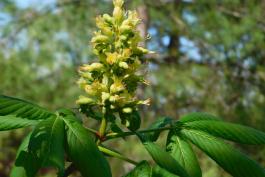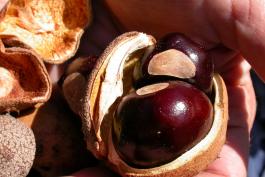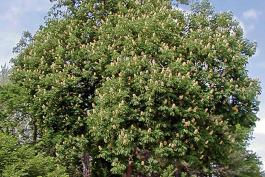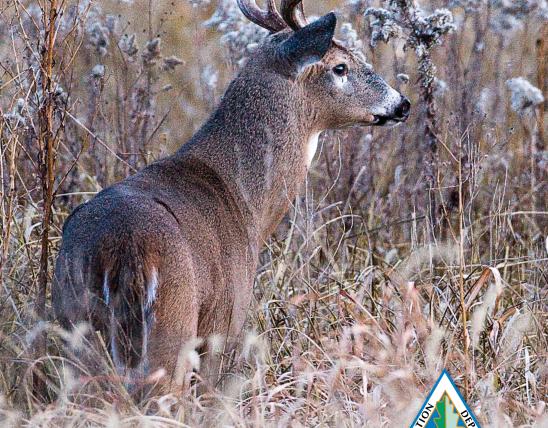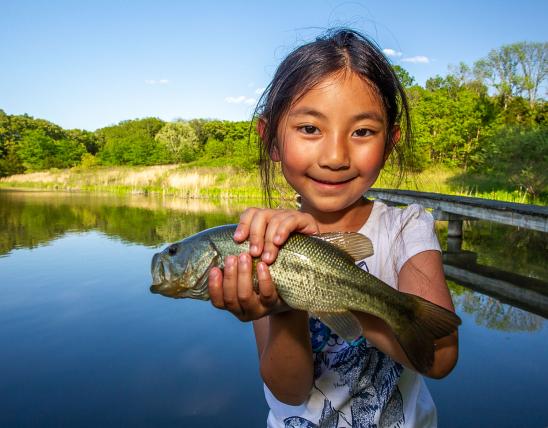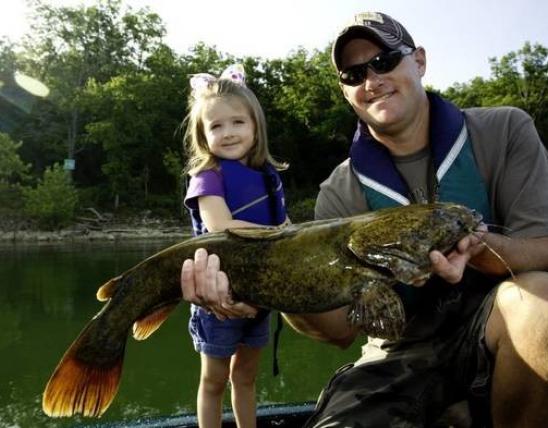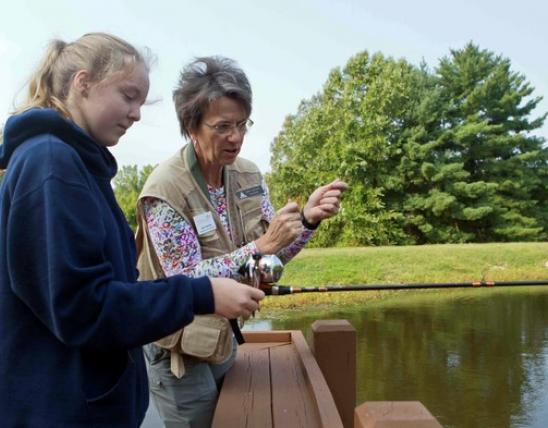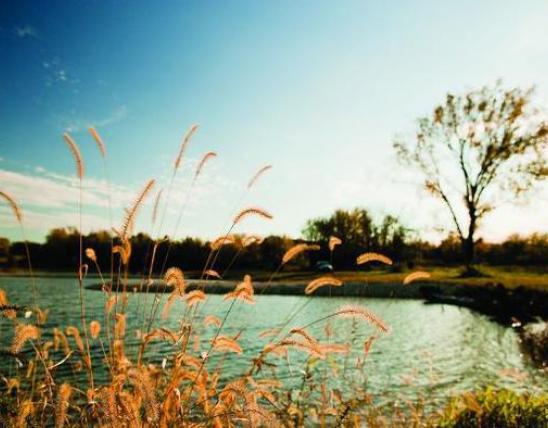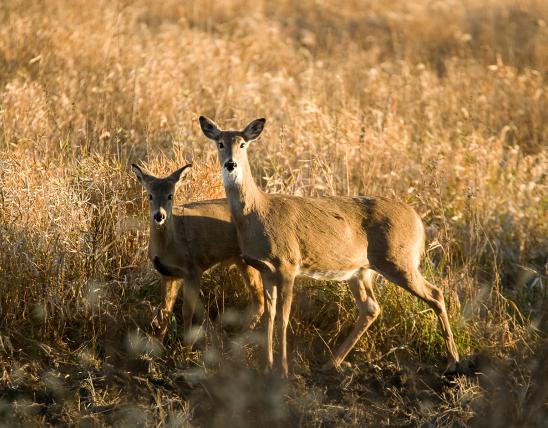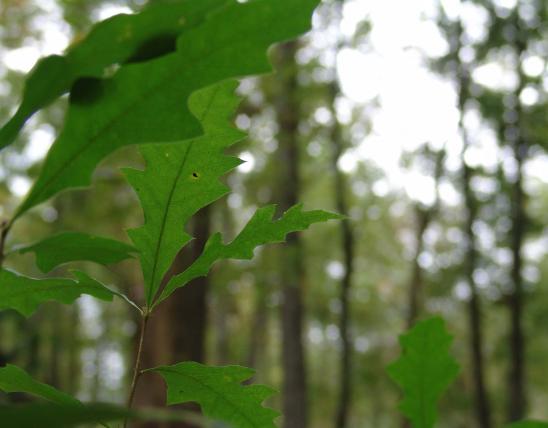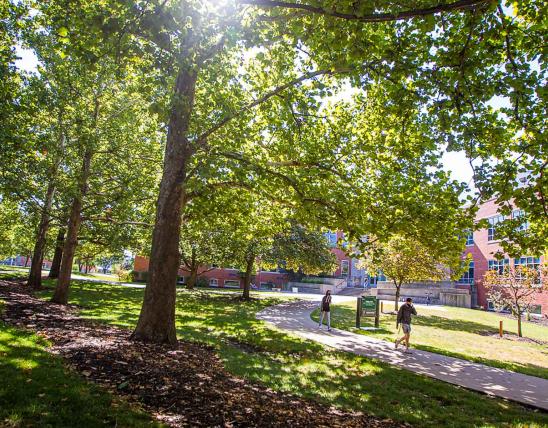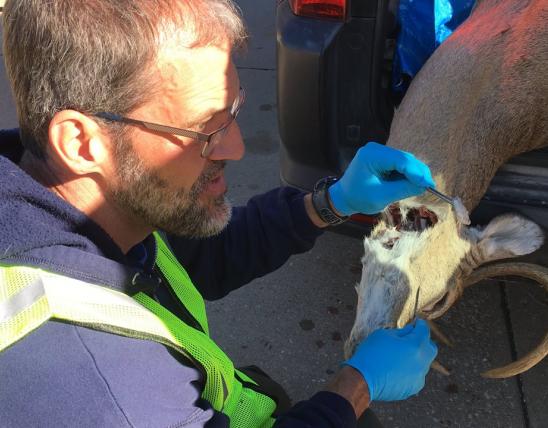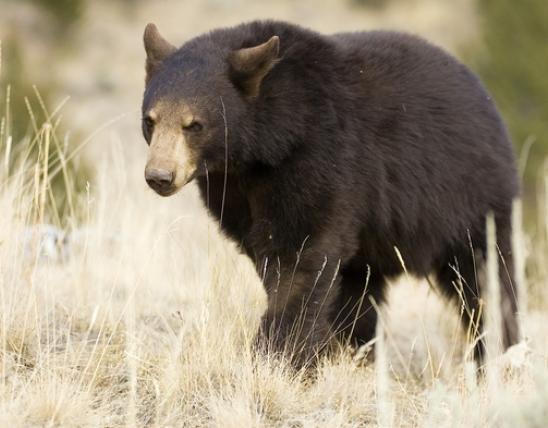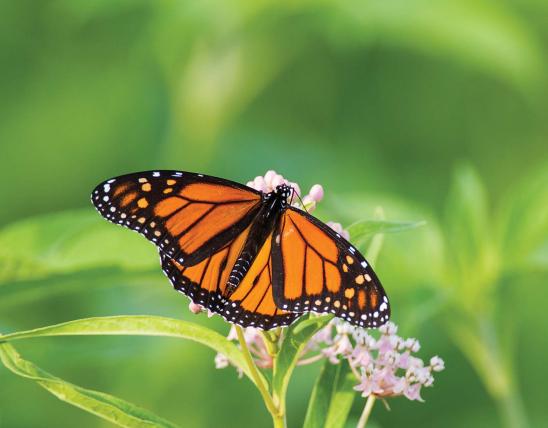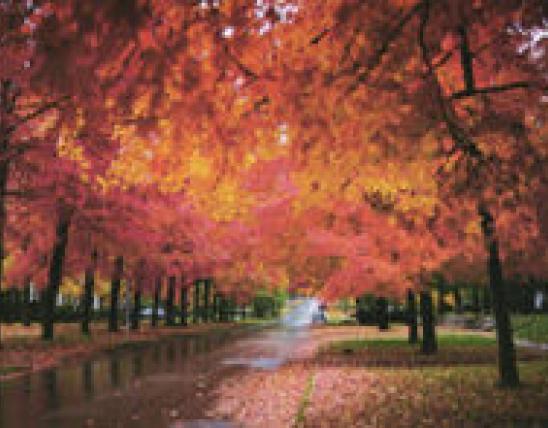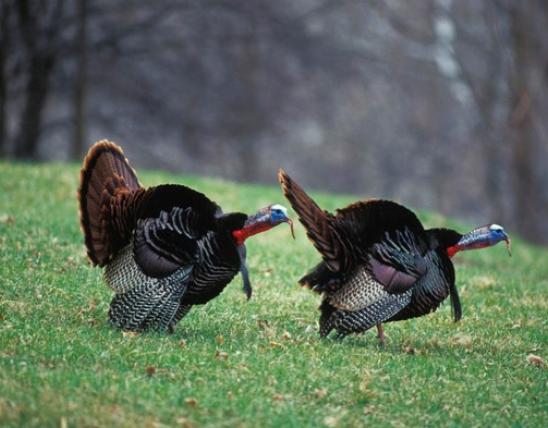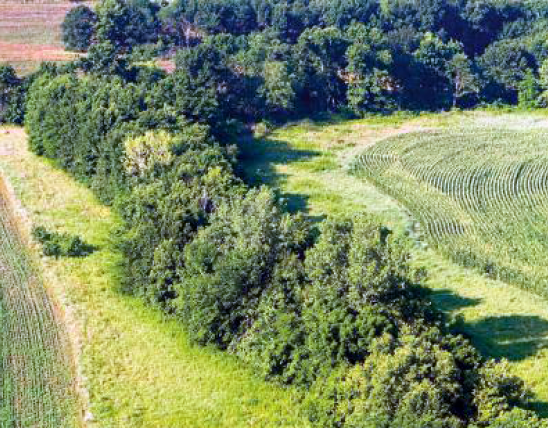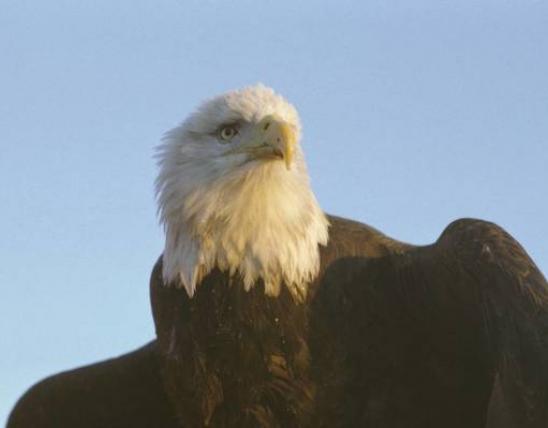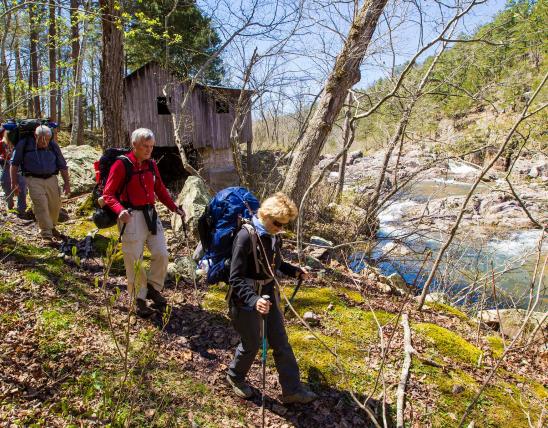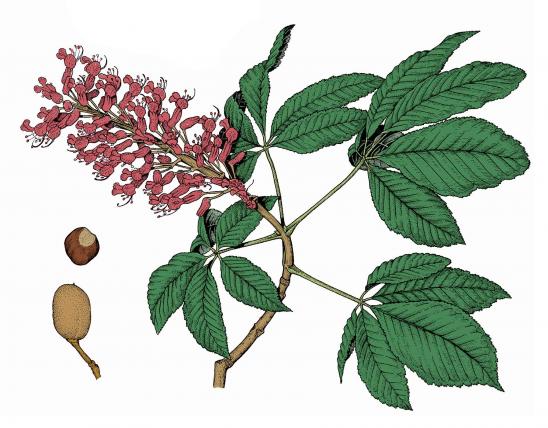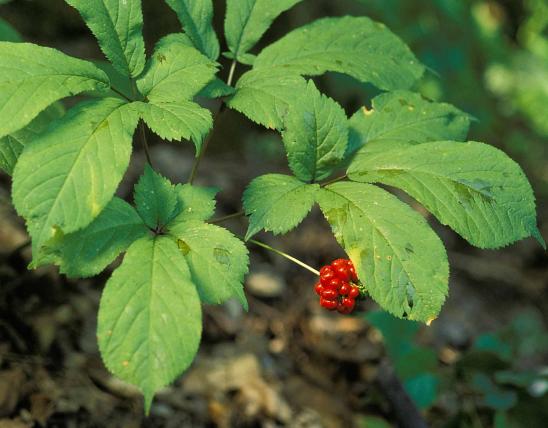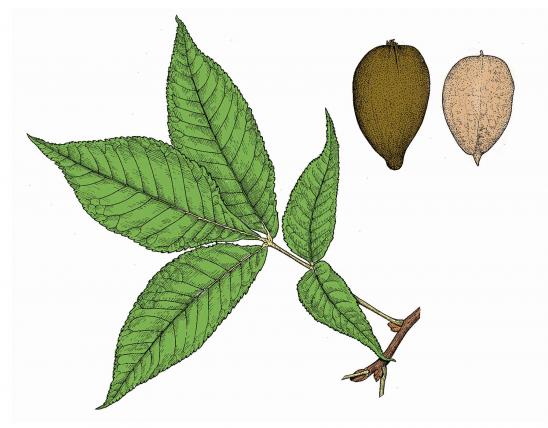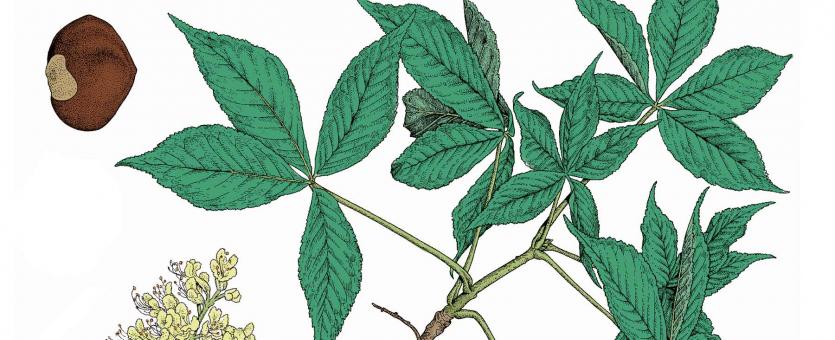
Ohio buckeye can be a shrub or a medium-sized tree, depending on site conditions, with branches drooping with upcurved ends.
Leaves are opposite, palm-shaped compound, with usually 7 leaflets; leaflets 4–6 inches long, 1½–2½ inches wide, broadest in the middle, margin finely toothed; upper surface bluish- or grass green; lower surface paler, smooth.
Bark is dark brown when young, smooth; older bark gray and broken into plates roughened by small, numerous scales, foul smelling.
Twigs are reddish brown to gray, hairy at first, smooth later; pores orange; leaf scars large.
Flowers April–May, greenish yellow, each flower about ¾ inch long, clustered along an axis 4–8 inches long at the tips of twigs; petals 4, stamens longer than the petals.
Fruits September–October, a light brown, leathery capsule; 1–2¼ inches across; globe-shaped, roughened by blunt spines, splitting into 3 parts; seeds 3, brown, shiny.
Similar species: Red buckeye (Aesculus pavia) is native to our extreme southeastern counties. It has red (not greenish-yellow) flowers with shorter stamens, has usually 5 (not 7) leaflets, and has fruits that lack spines.
Height: to 50 feet, depending on site conditions.
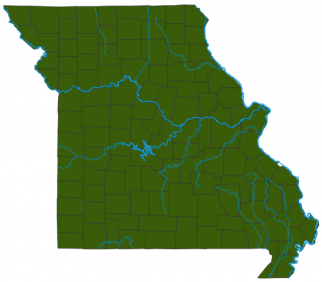
In the wild, statewide, except for the extreme southeast, where red buckeye (Aesculus pavia) is native. Both buckeyes are cultivated statewide.
Habitat and Conservation
Occurs in rich or rocky woods of valleys, ravines, gentle or steep slopes, bases of bluffs, edges of low woods, thickets, and occasionally on edges of limestone glades.
Human Connections
A popular ornamental tree. The wood has been used for fuel, paper, artificial limbs, splints, wooden ware, boxes, furniture, veneer, and sometimes for lumber. People have carried buckeyes in their pockets to prevent rheumatism and bring luck. Other medicinal uses have been made in the past of various parts of the tree. This is the state tree of Ohio, and Ohioans have been called "buckeyes" since the late 1700s, when Ohio was part of the American frontier.
Ecosystem Connections
Hummingbirds frequent the greenish yellow, tubular flowers for their nectar. Not many mammals eat the foliage, as they are high in tannic acid and are thus unpalatable.





